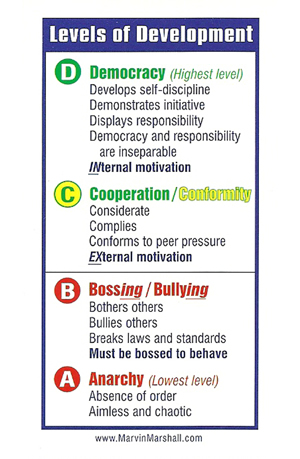The Levels of Development uses just four (4) concepts, or vocabulary terms, to describe two unacceptable behaviors (Level A and Level B) and two other terms to describe the concepts of external motivation (Level C) and internal motivation (Level D). The use of these terms leads to improved self-discipline.
Some primary teachers feel uncomfortable using the terms associated with unacceptable behaviors—anarchy and bullying. Rather than ignoring these negative concepts, young people are empowered when they can identify, articulate, and resist them.
The way to learn a concept is to have a way to describe it. This is the reason that one of the most fundamental approaches to … >>>
READ MORE >>> →





